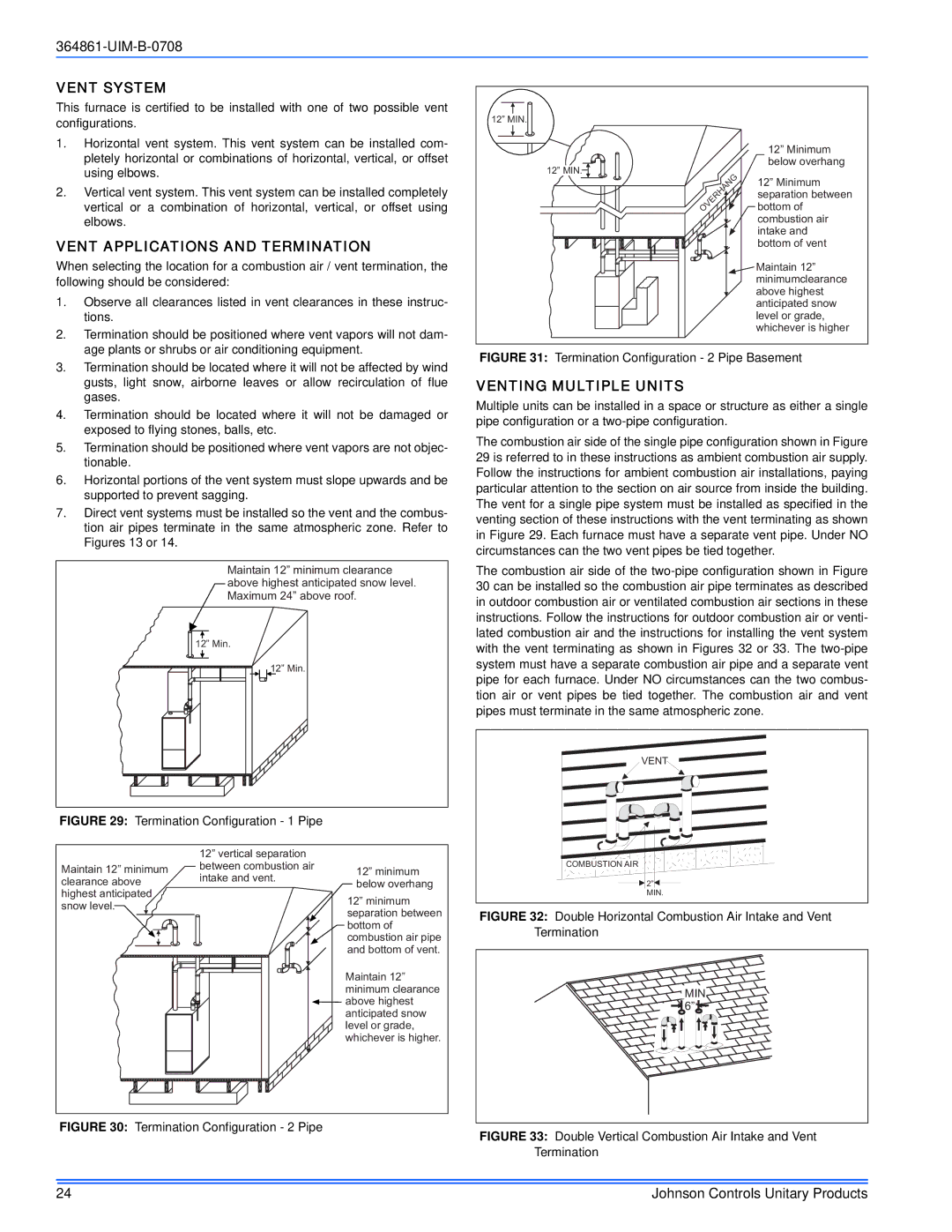TG9S*MP, GG9S*MP specifications
Johnson Controls has long been at the forefront of building efficiency solutions, and their TG9S*MP and GG9S*MP series exemplify this commitment. These two-stage, multi-position gas furnaces are designed for optimal comfort and performance in residential applications, and they come packed with a variety of features that enhance their efficiency and operational capabilities.One of the standout features of the TG9S*MP and GG9S*MP furnaces is their efficient two-stage operation. This technology allows the unit to operate at a lower capacity most of the time, which translates into reduced energy consumption and costs. When the demand for heating increases, the furnace automatically shifts to a higher capacity, ensuring a consistent and comfortable indoor temperature. This flexibility not only enhances comfort but also extends the lifespan of the unit as it doesn't have to work harder than necessary.
Energy efficiency is a crucial characteristic of both models. With an Annual Fuel Utilization Efficiency (AFUE) rating of up to 96%, these furnaces convert a significant amount of the fuel they consume into usable heat. Such efficiency ratings not only help in reducing energy bills but also have a positive impact on the environment by minimizing greenhouse gas emissions.
Both models feature advanced technology in their design, including a fully modulating gas valve and a variable-speed blower motor. The modulating valve adjusts the gas flow in response to the thermostat’s signals, allowing for precise temperature control and improved comfort. Meanwhile, the variable-speed blower motor enhances airflow while operating quietly, significantly improving overall indoor air quality by promoting even heat distribution throughout the home.
From a structural standpoint, the TG9S*MP and GG9S*MP are built with durable materials designed for longevity. Their compact design allows for flexible installation options, whether in a closet, attic, or basement. The furnaces also come equipped with a robust heat exchanger crafted from high-quality materials, which ensures both reliability and efficiency.
In conclusion, the Johnson Controls TG9S*MP and GG9S*MP furnaces provide homeowners with efficient, reliable, and comfortable heating solutions. With advanced features such as two-stage operation, impressive AFUE ratings, and modern technology integrations, these models stand out in the market as dependable options for both energy savings and year-round comfort. Whether you're a homeowner looking to upgrade your heating system or a contractor seeking high-quality products for your clients, these furnaces represent a smart choice.

